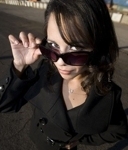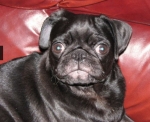http://www.apneasupport.org/post-11410.html
The major contributor to the quoted information -- sleepydave -- posts here at cpaptalk under the nicknames: deltadave, StillAnotherGuest (SAG), Muffy, and NotMuffy.
To see all the posts written by "sleepydave" while he was at that other message board:
http://www.apneasupport.org/search.php? ... sleepydave
Linda wrote:Sleep Study Terms
Hello,
The following information is provided to help you understand some of the terms of your sleep study. Some of the information is provided by our moderator Sleepydave, gleamed from portions of topics in this Sleep Studies Forum. Some of the information is provided from a Glossary of Sleep Study terms listed by Sleep Services of Jasper (GA), LLC Sleep Disorders Center. (link no longer active)
Linda
................................................
What is normal, mild, moderate and severe?
For AHI, normal is <5, mild 5-14, moderate 15-30, severe >30. (Sleepydave)
Apnea-Hypopnea index: The number of apneic episodes (obstructive, central, and mixed) plus hypopneas per hour of sleep, as determined by all-night polysomnography. (Glossary)
Mild: An apnea-hypopnea index from 5 to 14. An oxygen saturation of at least 86%. Unwanted sleepiness or involuntary sleep episodes occur during activities that require little attention. Examples include sleepiness that is likely to occur while watching television, reading, or traveling as a passenger. Symptoms produce only minor impairment of social or occupational function.
Moderate: An index from 15 to 30. An oxygen saturation of 80% to 85%. Unwanted sleepiness or involuntary sleep episodes occur during activities that require some attention. Examples include uncontrollable sleepiness that is likely to occur while attending activities such as concerts, meetings or presentations. Symptoms produce moderate impairment of social or occupational function.
Severe: An index greater than 30. An oxygen saturation of 79% or less. Unwanted sleepiness or involuntary sleep episodes occur during activities that require more active attention. Examples include uncontrollable sleepiness while eating, during conversation, walking, or driving. Symptoms produce marked impairment in social or occupational function.†(AHI and EDS references from: Flemons WW. Sleep-related breathing disorders in adults: recommendations for syndrome definition and measurement techniques in clinical research. Sleep 1999;22(5):667-89.)
Apnea
Apnea: Cessation of airflow at the nostrils and mouth lasting at least 10 seconds. The three types of apnea are obstructive, central, and mixed. Obstructive apnea is secondary to upper-airway obstruction; central apnea is associated with a cessation of all respiratory movements; mixed apnea has both central and obstructive components. (Glossary)
Arousal
Arousal: An abrupt change from a deeper stage of non-REM (NREM) sleep to a lighter stage, or from REM sleep toward wakefulness, with the possibility of awakening as the final outcome. Arousal may be accompanied by increased tonic electromyographic activity and heart rate, as well as by an increased number of body movements. (Glossary)
See Spontaneous Arousals
Awakening
Awakening: The return to the polysomnographically defined awake state from any NREM or REM sleep stages. (Glossary)
Delta Sleep
Delta sleep is the most restorative stage of sleep, and can be reduced by interruptions in sleep continuity by stuff like OSA, or simply as a function of age. Normal is about 20% of the night. (Sleepydave)
Delta Sleep Stage: This stage is indicative of the stage of sleep in which electroencephalographic delta waves are prevalent or predominant (sleep stages 3 and 4, respectively). (Glossary)
Hypopnea
Hypopnea: An episode of shallow breathing (airflow reduced by at least 50%) during sleep, lasting 10 seconds or longer, usually associated with a fall in blood oxygen saturation. (Glossary)
Normal Sleep
Normal sleep% are:
Stage 1 - 5%
Stage 2 - 55%
Stage 3/4 - 20%
REM - 20%
Stage 1 is only a transition state from wake to stage 2 and has no real rest value. A lot of it means inability to initiate and/or maintain sleep.
Stage 3/4 (SWS) decreases as a function of age, or if you're subject to constant arousals, as in OSA. There are strict criteria to score SWS, so one may still be having some SWS-like activity, but can't be scored as such because it fails to meet scoring criteria, such as waveform height (amplitude). (Sleepydave)
NREM Sleep
Non-REM sleep (Glossary)
Oxygen Saturation
Normal Oxygen Saturation (SaO2) is >94%. (Sleepydave)
Oxygen Saturation: Oxygen content of blood divided by oxygen capacity and expressed in volume percent. (Glossary)
REM Sleep
Rapid Eye Movement (Glossary)
REM sleep should compose about 20% of the study. (Sleepydave)
Sleep Stage REM: The stage of sleep with the highest brain activity, characterized by enhanced brain metabolism and vivid hallucinatory imagery of dreaming. There are spontaneous rapid eye movements, resting muscle activity is suppressed, and awakening threshold to nonsignificant stimuli is high. The electroencephalogram is a low-voltage, mixed-frequency, nonalpha record. REM sleep is usually 20% to 25% of total sleep time. (Glossary)
Sleep Efficiency
Normal sleep efficiency is at least 85% (asleep 85% of the night). It is reduced in a number of situations, such as insomnia or simply lab effect. (Sleepydave)
“Sleep Efficiency (or Sleep-Efficiency Index): The proportion of sleep in the episode potentially filled by sleep (i.e., the ration of total sleep time to time in bed) or Sleep Efficiency = Total sleep time multiplied by time in bed. (Glossary)
Sleep Latency
Normal sleep latency is about 15 minutes, REM latency is 90 minutes, so those are OK. (Sleepydave)
Sleep Latency: The duration of time from lights out, or bedtime, to the onset of sleep. (Glossary)
Sleepiness Guidelines
Mild: Unwanted sleepiness or involuntary sleep episodes occur during activities that require little attention. Examples include sleepiness that is likely to occur while watching television, reading, or traveling as a passenger. Symptoms produce only minor impairment of social or occupational function.
Moderate: Unwanted sleepiness or involuntary sleep episodes occur during activities that require some attention. Examples include uncontrollable sleepiness that is likely to occur while attending activities such as concerts, meetings or presentations. Symptoms produce moderate impairment of social or occupational function.
Severe: Unwanted sleepiness or involuntary sleep episodes occur during activities that require more active attention. Examples include uncontrollable sleepiness while eating, during conversation, walking, or driving. Symptoms produce marked impairment in social or occupational function.
Reference: Flemons WW. Sleep-related breathing disorders in adults: recommendations for syndrome definition and measurement techniques in clinical research. Sleep 1999;22(5):667-89.
Spontaneous Arousals
Spontaneous Arousal Index: The number of spontaneous arousals (e.g. arousals not related to respiratory events, limb movements, snoring, etc) multiplied by the number of hours of sleep. (Glossary)
An arousal is a wake or "alpha" pattern for 3 to 15 seconds. You are usually not aware of arousals. As you suggest, there are 3 types of arousals reported out on the sleep studies- those attributed to respiratory events, periodic limb movements and those that are spontaneous. Spontaneous arousals have no directly attributable cause, or cannot be linked to the first 2 reasons for arousals.
That said, there may be respiratory events during sleep that generate "spontaneous" arousals. like snores or flow limitations. Indeed, the whole Upper Airway Resistance Syndrome is based on the presence of a large number of spontaneous arousals without the presence of scorable respiratory events such as hypopneas or apneas. Technically, they should be identified using an esophageal ballon to measure negative inspiratory pressure (which just about nobody does) or a nasal or oro-nasal pressure transducer, and look for flow limitations. These are RERAs (Respiratory Effort-Related Arousals).
If you take this number, RERA, and add it to the AHI, you have the Respiratory Disturbance Index (RDI).
There are a bunch of things that could create the scenario for the appearance of a large number of truly spontaneous arousals, such as medications that deter sleep (pseudoephedrine, caffeine, some antidepressants, too much thyroid medication, etc.), depression and narcolepsy. (Sleepydave)
Last edited by Linda on Wed Dec 17, 2008 1:59 pm; edited 3 times in total
Wed Jan 04, 2006 3:49 pm










